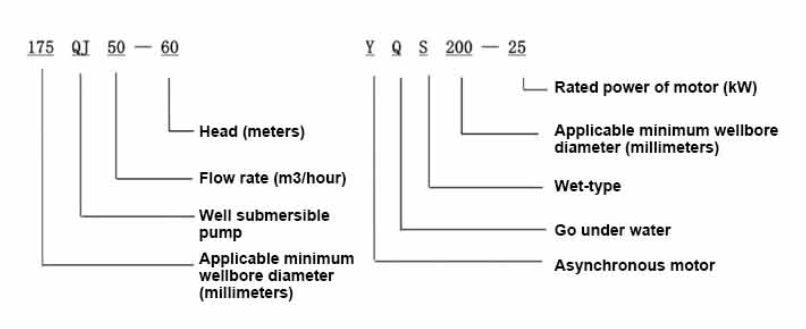Jul . 26, 2024 15:32 Back to list
Exploring the Efficiency and Applications of Deep Well Suction Pumps in Water Extraction Systems
Understanding Deep Well Suction Pumps A Comprehensive Overview
Deep well suction pumps are essential components in various water supply systems, designed to lift water from deep underground sources. These pumps are particularly critical in areas where surface water is scarce and groundwater is the primary source of drinking water, irrigation, and industrial use. This article will explore the workings, applications, advantages, and maintenance of deep well suction pumps.
How Deep Well Suction Pumps Work
Deep well suction pumps operate based on a relatively simple principle they create a vacuum that allows atmospheric pressure to push water up into the pump. The design typically consists of a motor, a suction line, and a pump impeller. The motor helps rotate the impeller, creating a low-pressure area within the pump casing. Once the pressure drops, atmospheric pressure forces the water upward through the suction line.
The depth of the well is a crucial factor when using these pumps. Generally, deep well suction pumps are effective up to a maximum depth of around 25 feet, as deeper installations require a different approach due to the physical limitations of atmospheric pressure. For wells deeper than this, submersible pumps may be more appropriate, as they can operate submerged in water without such restrictions.
Applications of Deep Well Suction Pumps
Deep well suction pumps are utilized in various applications. They are commonly found in agricultural settings, where farmers depend on groundwater for irrigation purposes. Additionally, these pumps are frequently used in municipal water supply systems to ensure a steady supply of potable water. Industries that require significant volumes of water, such as manufacturing and mining, also employ deep well suction pumps to meet their operational needs.
In residential settings, homeowners often use these pumps to extract groundwater for personal use, whether for gardening, livestock, or household needs
. The versatility of deep well suction pumps makes them a staple in both rural and urban infrastructures.deep well suction pump

Advantages of Deep Well Suction Pumps
One of the primary advantages of deep well suction pumps is their cost-effectiveness. They generally require less initial investment compared to submersible pumps and are easier to install and maintain. Furthermore, these pumps can be manually operated in an emergency, providing a reliable water source during power outages or system failures.
Another significant benefit is the pump's ability to handle solid particles in water. Deep well suction pumps can effectively manage a certain level of sediment, making them suitable for various applications where water quality is not strictly regulated.
Maintenance and Considerations
Like any mechanical system, deep well suction pumps require regular maintenance to operate efficiently. This includes checking for wear and tear, ensuring the suction line is free from blockages, and inspecting the motor and electrical connections. Regular maintenance not only prolongs the pump's lifespan but also ensures that it operates at optimal efficiency.
When selecting a deep well suction pump, it's essential to consider factors such as the depth of the well, the required flow rate, and the specific application's demands. Consulting with professionals or manufacturers can help in choosing the right pump for individual needs.
Conclusion
Deep well suction pumps play a pivotal role in extracting groundwater from significant depths, serving a wide range of applications from agriculture to municipal water supply. Their simplicity, cost-effectiveness, and versatility make them an invaluable asset in managing one of our most precious resources—water. Understanding their operation, uses, and maintenance will empower users to make informed decisions about their water supply systems, ultimately promoting efficient water use and conservation practices.
-
Submersible Water Pump: The Efficient 'Power Pioneer' of the Underwater World
NewsJul.01,2025
-
Submersible Pond Pump: The Hidden Guardian of Water Landscape Ecology
NewsJul.01,2025
-
Stainless Well Pump: A Reliable and Durable Pumping Main Force
NewsJul.01,2025
-
Stainless Steel Submersible Pump: An Efficient and Versatile Tool for Underwater Operations
NewsJul.01,2025
-
Deep Well Submersible Pump: An Efficient 'Sucker' of Groundwater Sources
NewsJul.01,2025
-
Deep Water Well Pump: An Efficient 'Sucker' of Groundwater Sources
NewsJul.01,2025
-
 Submersible Water Pump: The Efficient 'Power Pioneer' of the Underwater WorldIn the field of hydraulic equipment, the Submersible Water Pump has become the core equipment for underwater operations and water resource transportation due to its unique design and excellent performance.Detail
Submersible Water Pump: The Efficient 'Power Pioneer' of the Underwater WorldIn the field of hydraulic equipment, the Submersible Water Pump has become the core equipment for underwater operations and water resource transportation due to its unique design and excellent performance.Detail -
 Submersible Pond Pump: The Hidden Guardian of Water Landscape EcologyIn courtyard landscapes, ecological ponds, and even small-scale water conservancy projects, there is a silent yet indispensable equipment - the Submersible Pond Pump.Detail
Submersible Pond Pump: The Hidden Guardian of Water Landscape EcologyIn courtyard landscapes, ecological ponds, and even small-scale water conservancy projects, there is a silent yet indispensable equipment - the Submersible Pond Pump.Detail -
 Stainless Well Pump: A Reliable and Durable Pumping Main ForceIn the field of water resource transportation, Stainless Well Pump has become the core equipment for various pumping scenarios with its excellent performance and reliable quality.Detail
Stainless Well Pump: A Reliable and Durable Pumping Main ForceIn the field of water resource transportation, Stainless Well Pump has become the core equipment for various pumping scenarios with its excellent performance and reliable quality.Detail
